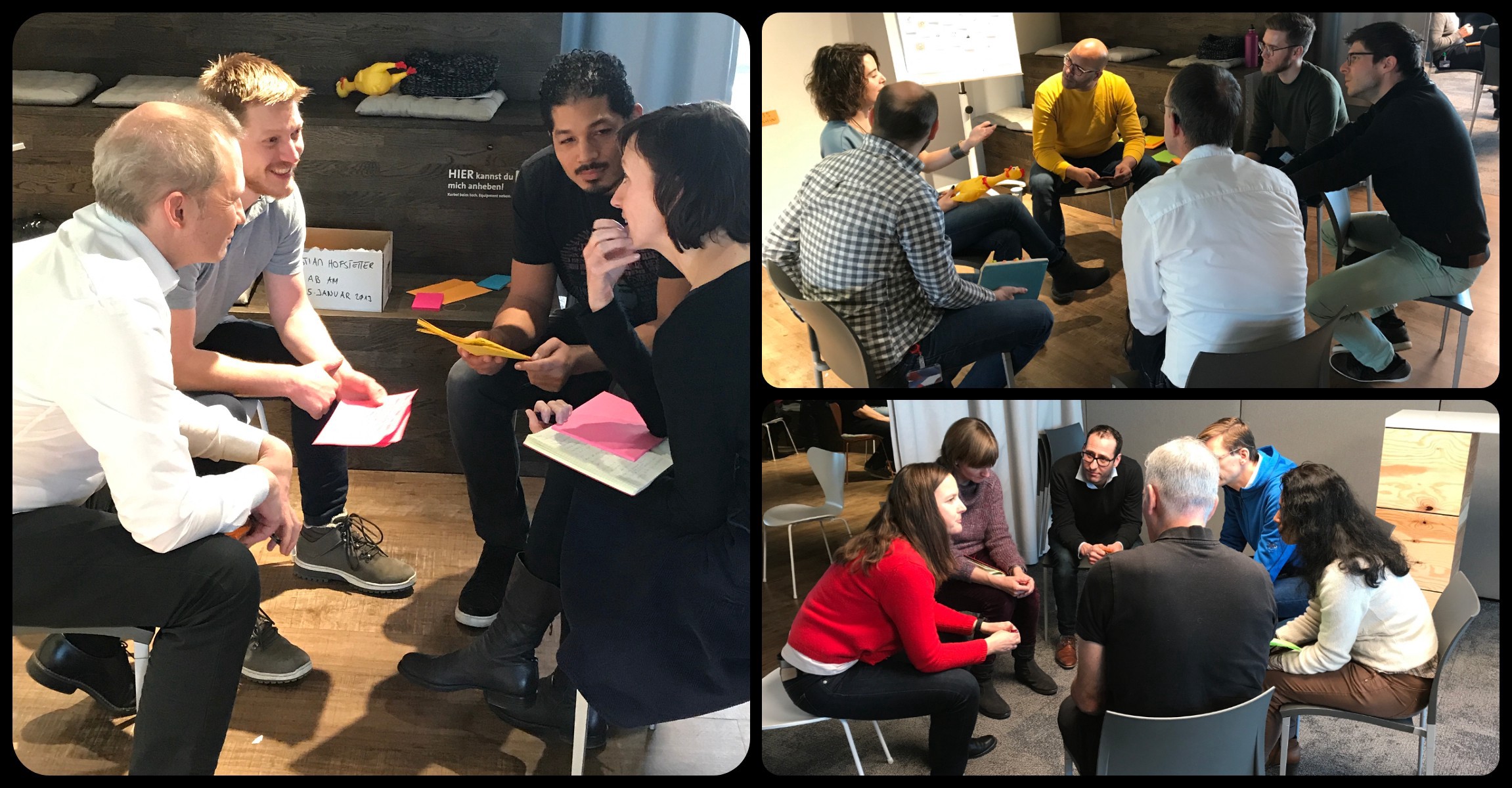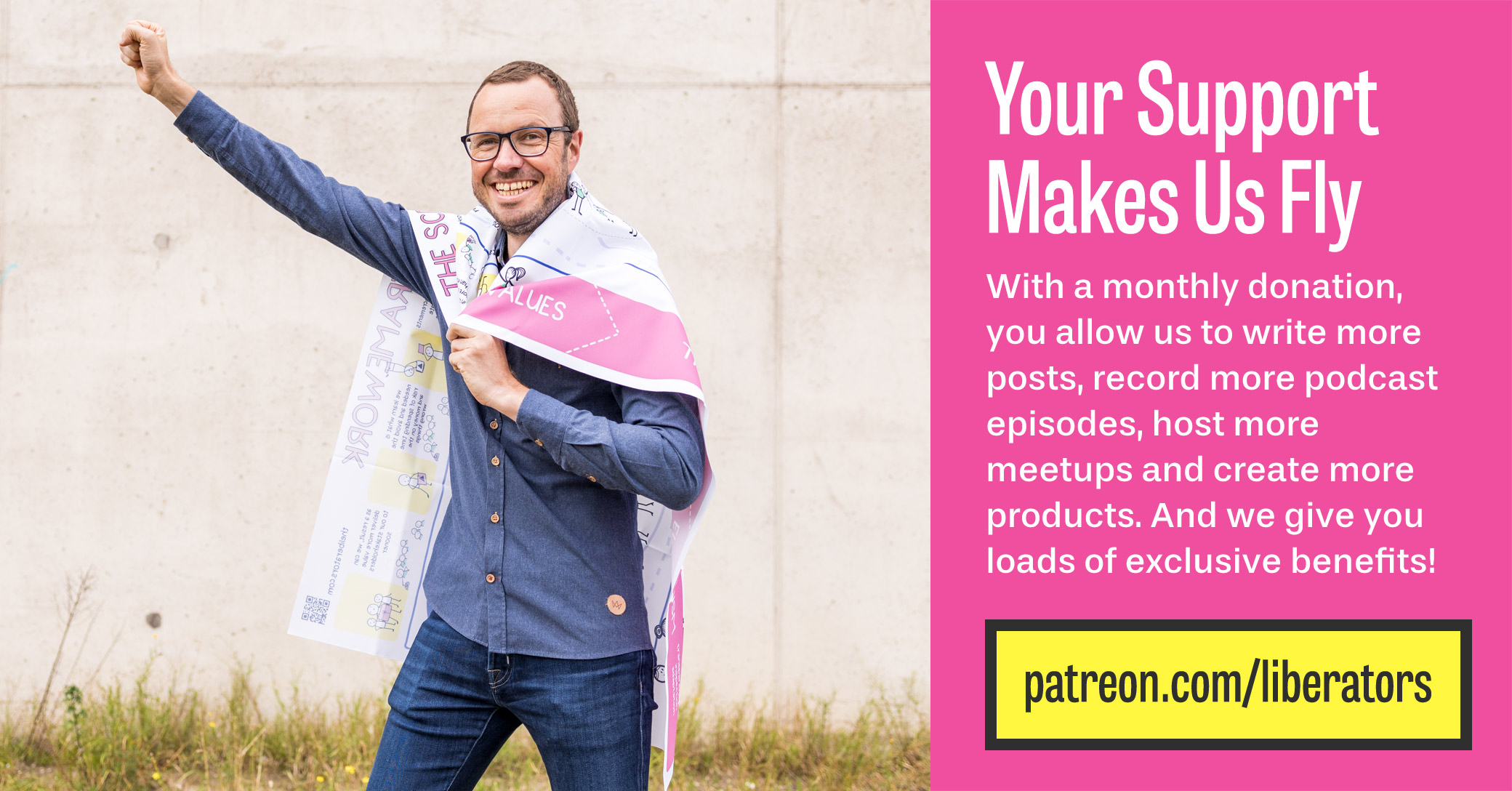
Liberating Structures are a collection of interaction patterns that allow you to unleash and involve everyone in a group — from extroverted to introverted and from leaders to followers. In this series of posts, we show how Liberating Structures can be used with Scrum.
We often make decisions based solely on our intuition or gut feeling. But what if we would base our decisions more on data? This article is about Simple Ethnography. A Liberating Structure that is all about gathering data to drive shared sense-making. Data can be used to find solutions to challenges, gain insights about experiments, and to validate assumptions.
Examples of how to use Simple Ethnography are…
- An organization is about to launch a new version of a product. Before the launch, users are invited to test the product. Simple Ethnography is used to see how the new version is used. Are they using the new features? Is it an improvement? What else can we learn from the observations?
- Within an organization, people complain about boring, ineffective, and energy-draining meetings. As an experiment, Simple Ethnography will be used to gather data about these types of meetings. What is it that makes these meetings ineffective and energy-draining? What can we tell about the type of conversations, the involvement, and the engagement of the participants?
- As part of introducing the Scrum Framework, management encourages Scrum Teams to redesign the office space. To gain inspiration, several Scrum Teams visit other organizations and use Simple Ethnography to observe how they optimized their environment. The key observations are shared with management and put into practice.
Simple Ethnography is all about gathering empirical data through observation. Part of observation is being curious, asking questions, and refraining from judging. This allows you to see what’s really going on. What’s the real challenge a team is facing? What patterns can be noticed in how people interact in this organization? What do we mostly see & hear during the various Scrum events? Based on our observations, what seems to be a good next step?
In this post, we explain how to facilitate Simple Ethnography, offer examples of how we used it and share ideas of combining it with other Liberating Structures.

During our classes, we use Simple Ethnography as well. What do observers notice while the students engage with the various exercises?
How to facilitate Simple Ethnography
Mostly as described on the website of Liberating Structures
Preparation
- Provide the observers with a notebook, camera, or video;
- Give the observers a sheet with prepared questions;
- Ask permission for observing what a group or a person does;
Steps
- (5 min) Explain the purpose of the observers: to observe behavior in the field with the purpose of gathering data (not judgment). Give the observers the sheet with the prepared questions. This helps them to focus on the most important behavior;
- (5 min) Explain the problem to be solved and the current understanding of the situation. Identify sites, events, or activities to observe and people to watch that will reveal user experience in-depth;
- (15–60 min) Perform the simple ethnography individually on in pairs by visiting the selected sites, events, or other activities;
- (15–60 min) Collect the observations that address the challenge together with the observers and participants, and reflect on insights, ideas, and feelings that emerged;
- (10–15 min) Write up observations or compose stories that highlight needs and opportunities;
- (10–15 min) Use insights for creating new approaches that help resolve the challenge. Repeat steps until the core-group members feel they have a particularly powerful new approach to prototype.
Questions to use when visiting another organization
Based on ideas from Henri Lipmanowicz & Keith McCandless
As mentioned earlier, Simple Ethnography can be used to visit another organization and gather data on their way-of-working. To give this observation more structure, the observers can prepare specific questions to interview the participants. After having conducted the initial individual observation, use the following questions to reflect on insights, ideas, and feelings that emerged.
As an observer, ask the participants:
- Sequence: Walk me through… what do you do first… then what do you do next?
- Specificity: Let’s take yesterday for example… please start from the beginning. Is there a critical event or story that comes to mind?
- Tasks + structure: Can you draw me a diagram of your daily work?
- Comparison: Would others handle situations this way or differently? What would your peers think?
- Naive Outsider: I’m a stranger, tell me about the culture here…
- Changes: How are things different from last year?
- History: So far, what methods have you used to address this challenge?
Collect the answers and debrief them together with other observers and participants. Optionally, use “What, So What, Now What”. Based on all our observations:
- What have you seen, heard or observed? What did you notice? What facts stood out the most?
- So, what do these observations mean to you? What seems to be important? What patterns and conclusions are emerging?
- Now what actions make sense? What is a good next step?
Gathering data about Liberating Structures itself
During a Liberating Structures Immersion Workshop, we often use Simple Ethnography to invite some participants to become observers. This allows them to see what Liberating Structures make possible when working with groups. For example, when the group is engaged with Troika Consulting, the observers receive a survey with questions like:
- If you would take a birds-eye view of the room, how are people and groups positioned?
- What do you notice on the people’s body language?
- What do you notice on the people facial expressions?
- The way time is being used and switching between pairs?
The purpose of the observers is to gather data (not judgment). When Troika Consulting is finished, the observers are asked to share their findings with the group. Using Simple Ethnography to gather data about Liberating Structures itself, helps the group create a better understanding of its design, structure, and potential.
How to use Simple Ethnography as a Scrum Team?
- Use Simple Ethnography by organizing a ‘User Safari’. Help Scrum Teams get to know their users and what their challenges are by going to them and actually asking them. Not only does this give the Scrum Team a much better understanding of the environments in which products are used and by whom, but it also helps understand the purpose of their work.
- Use Simple Ethnography during the Sprint Review. During the Sprint Review, the entire Scrum Team should actively observe various dynamics. The Product Owner uses observation to detect the response of the stakeholders to the current state of the product increment. The Development Team to determine if how the product is being built matches the stakeholder’s and users’ expectations. And, the Scrum Master to sense the atmosphere. What do body language and facial expressions tell us? Who’s engaged? Who seems to be tuned out? What conclusions can we draw? By making observation a shared activity during the Sprint Review, it will offer lots of valuable input for the Sprint Retrospective.
- Use Simple Ethnography by organizing a ‘Scrum Safari’. Get in contact with organizations of whom you’ve heard good stories about working with Scrum. Have your Scrum Team, or a delegation, observe all their Scrum Events. What makes their Daily Scrum successful? How are they doing the Sprint Review? How are they dealing with the challenges at hand? What can you notice about communication and collaboration? Afterward, share insights and determine what to improve in your own Scrum Team.
- Use Simple Ethnography as a Scrum Master. Being an observer, and gathering data about what’s actually going on in your team and organization, is a foundational activity for a Scrum Master. It’s what makes you a good coach, facilitator or change agent. Effective coaching is only possible when you truly understand the challenges the team is facing. Facilitation of e.g. the Sprint Retrospective becomes much more valuable, once you can connect it to tangible observations you’ve gained during the Sprint. Changing the environment of the Scrum Team is only possible once you truly understand what the environment looks like. Therefore, start gathering data about the things you see, hear, or notice. Interprete this data with others and jointly determine the next steps to improve Scrum.
- Use Simple Ethnography to conduct ‘Guerilla Testing’. With your Development Team, pick a discrete number of features or assumptions you’d like to test. Go to a place where you’re likely to real users. This can be the lunchroom or a meeting point in your building if your product is for internal use. Ask a user to perform a particular action or achieve a particular goal. Write down any observations or feedback. You can even film the session if the user doesn’t mind. Rinse and repeat to gather feedback from different users. It’s also a great way to get a sense of who your users are and what they’re looking for;

- Picture by Christiaan Verwijs
Our findings
- Take sufficient time to prepare the survey questions that observers use. Good questions will make Simple Ethnography more useful and efficient;
- Prepare Simple Ethnography together with the observers. Do a kickoff where you clarify the survey and its intention;
- Avoid adding meaning and interpretations to observations. Prevent working from assumptions and judgments, as this will effectively blind the observers from seeing what is really happening;
- Before starting Simple Ethnography ask the people being observed for permission. Otherwise, it might result in an awkward situation;
- Try to not only observe the obvious but look for surprising elements as well;
Combinations with other Liberating Structures
- For the debrief, try “What — So What — Now What”, “1–2–4-ALL”, “Conversation Cafe”, or “Impromptu Networking”. If possible, include the observers and participants (the ones being observed).
- Use “UX Fishbowl” with the observers in the inner circle sharing their findings, or invite the participants to join the inner circle.
- Try “Nine Whys” to clarify the purpose of the scenario or challenge you’re using Simple Ethnography. What’s the purpose of this organization or team? Afterward, explore how the collected data is aligned with its purpose;
- Use “Shift & Share” to have the observers share their findings with the group. Together, interpret the data, discuss insights and develop new ideas.
- Plot the data on an “Ecocycle Planning” to identify obstacles and opportunities for progress. Consider using “Panarchy” as well, this will create transparency about the system as a whole.

Conversation Cafe can be used for debriefing Simple Ethnography and sharing the gathered data
Closing
In this blog post, we explained the Liberating Structure ‘Simple Ethnography’. We clarified its purpose, the steps to facilitate it, what our findings are, and offered examples of using it with Scrum. We hope this encouraged you to give it a try and we’re eager to hear about your experiences with this structure. If you have some, please let us know in the comments.
We’re always happy to help you do this in your organization if you’re up for it. And if you liked the article, please give it some “claps” with the clap-icon :)
Interested in learning many different Liberating Structures in an intense 2-day workshop? Check out our agenda for upcoming Immersion Workshops. If you’re aiming to join, book early — they are exceptionally popular. And join the Dutch User Group to learn more about Liberating Structures.

See how you can support us at patreon.com/liberators
